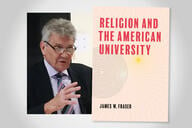You have /5 articles left.
Sign up for a free account or log in.

SDI Productions from Getty Images Signature
We need to change our thinking about community college students and their decisions to delay attending four-year institutions. For many of these students, their choice to study at community college comes as a result of the many identities and responsibilities they hold: they do not have the luxury of only being a student. They have multi-faceted lives as caregivers, as parents, as workers, as familial anchors and as part of the familial financial equation. They know that to go directly to a four-year college would be to abandon the other essential aspects of their lives while, at the same time, possibly incurring burdensome debt. Being aware of and understanding these realities, we in higher education, especially those of us at four-year institutions, need to take the next steps in our equity work in relation to our nation’s most at-risk college student population.
Community college students are vulnerable financially and emotionally. Many of them know that it is a smart fiscal move to attend community college because these colleges are less expensive compared to the out-of-range and exclusive costs of some four-year institutions. Take an Orange County Community College student who shared with us during a site visit his intent to get a doctorate and work at the National Aeronautics and Space Administration. He had mapped out a plan and it was clear that community college tuition was most cost-effective for his first two years of college, given the amount of schooling needed for his career aspirations.
In addition, since a university can be overwhelming and challenging to navigate because of its elite history and complex structure, some students purposely choose community college as a more manageable or less intimidating alternative. One Dutchess Community College student stated that she was going to community college in order to “figure out how to be a university student” and to be close to her family while she did so. Judith S. Eaton, president emeritus of the Council for Higher Education Accreditation, notes that community colleges often create hospitable environments for underserved students, including by having more minority faculty with whom students can identify.
Four-year colleges, those committed to deeper equity, would benefit by paying attention to the choices that these students are making and their reasoning for doing so. That attention has to go beyond the surface: We have to look at who is transferring and whether a single-minded focus on transfer continues to perpetuate existing inequities. We know that more than 80 percent of community college students want to transfer to a four-year college but only about 25 percent actually do, and that “transfer pathways to highly selective public flagship and private institutions are dominated by students from the top 20 percent in the U.S. household income distribution.”
Students from the lowest income quintile are more than three times as likely as students from the highest income quintile to start at community college, and the share of dependent students at community college who are living in poverty has doubled from 13 percent in 1996 to 27 percent in 2016. In terms of the race and ethnicity breakdown, 52 percent of all Native American undergraduates, 48 percent of all Hispanic undergraduates and 39 percent of all Black undergraduates in U.S. higher education are enrolled in community colleges. These numbers show that it is the most vulnerable of students who are not obtaining their desired educational outcomes.
To be sure, much has already been done at selective colleges in an effort to level the playing field concerning low income, first-generation and students of color. Need-blind admissions and financial aid commitments to meet student need remain a tremendous gift for students who are equal to the academic task of an elite institution but who, prior to these policies, would have been unable to attend such colleges. These radical changes in policy have opened the four-year pathway for so many students, and yet there are huge numbers left out of the equation. Community college students are often those left behind students.
The next step in diversity, equity and inclusion work is to focus on community college transfer students. Four-year colleges would better serve these students by asking these essential questions: What partnerships do we have with the community colleges in our local areas? What outreach is being done to invite their students onto our campus so they can explore their possible next steps? What does financial support for community college transfer students look like? Specific programs and financial commitments that help bridge the gap for community college students are acutely needed to help ensure learners make a smooth transition from their community college to the four-year college environment.
Here at Vassar College, our longstanding Exploring Transfer (ET) program offers selected community college students the opportunity to live on campus, take courses team-taught by a Vassar and a community college faculty member, and receive course credit. This program, which is free for students to attend, makes a significant difference for participants. A survey of program graduates conducted in 2022 indicated that 70 percent had obtained their bachelor’s degree and another 15 percent were currently enrolled at a four-year institution.
In a series of focus groups to evaluate the program last spring, ET participants over the years shared openly about opportunities for improvement and also the tremendous impact the program made on their lives. Their comments include the two below:
“I frequently refer to my time there as brain boot camp, and I 100 percent left with the feeling that I was completely capable of that level of rigorous study … So it felt validating to my intelligence.”
“So it made me feel hopeful, and made me feel comfortable with challenging myself and being in environments that are uncomfortable and unfamiliar. Because I did ET, right? Like, what can’t I do?”
The students who participate in ET are primarily students of color, first-generation and from low-income backgrounds. They are among the most vulnerable students in higher education. More similar efforts by a broad range of four-year institutions are urgently needed to help a greater number of community college students achieve their goals of transfer. Through our Exploring Transfer Together program, funded with a grant from the Educational Credit Management Corporation (ECMC), we are working to help other colleges establish programs similar to ET.
Certainly, this work becomes even more critical given the recent, and rather baffling, Supreme Court decision that restricts colleges from using race in the admissions process. The stark reality is that some four-year institutions, particularly selective liberal arts ones, will be at quite a loss in the coming years given this decision, and their interpretation of it and enactment of corresponding polices will determine the trajectory of so many talented, marginalized students. As we work out how to proceed, we need to ensure that community college students are an intentional part of the equation. Add to this the coming demographic cliff, and the need for four-year colleges to be forward facing becomes clear. Selective institutions will most likely ride this wave just fine, as they will still have plenty of applicants, but they will lose in terms of sustaining a diverse student body if they remain solely focused on the population of high school enrollees. Higher education institutions would do well to take this next step in equity work by prioritizing community college transfer students if we are to make good on our social justice declarations.




